草原土壤儲存有439 Gt有機碳(SOC),在調節區域乃至全球氣候變化進程中起著重要作用。然而,全球氣候變化背景下,大氣氮沉降的“施肥效應”強烈地影響著土壤碳儲存。因此,明確高寒草甸SOC組分對氮、磷富集的響應和潛在機制至關重要。
西南民族大學高寒濕地生態保護研究創新團隊馬文明副研究員課題組依托青藏高原生態保護與畜牧業高科技研究示范基地和四川若爾蓋高寒濕地生態系統國家野外科學觀測研究站以紅原高寒草甸為研究對象進行了長期氮磷添加實驗。采取隨機區組用尿素(CO(NH2)2)和過磷酸鈣(Ca(H2PO4)2·H2O)設計7個施肥梯度,氮肥施尿素(46.65%N),磷肥施過磷酸鈣(16%P2O5),施肥梯度分別為(0g尿素+0g過磷酸鈣)/m2(CK)、(10g尿素)/m2(N10)、(30g尿素)/m2(N30)、(10g過磷酸鈣)/m2(P10)、(30g過磷酸鈣)/m2(P30)(5g尿素+5g過磷酸鈣)/m2(NP10)、(15g尿素+15g過磷酸鈣)/m2(NP30)。研究發現,氮和磷添加導致 SOC含量增加19.95%–36.66%;在相同施肥條件下,SOC含量隨著施肥梯度的增加而增加,在N30處理下達到最高;N和P添加促進了脂肪族碳和芳香族碳的富集;與其他處理相比,NP30處理下SOC的穩定性最高,而P10處理下SOC的穩定性最低。表明N和P添加促進了不穩定碳的損失和穩定碳的富集,從而提高了SOC的穩定性,促進了高寒草甸SOC的封存。總體而言,氮磷添加改變了高寒草甸土壤有機碳的理化性質以及SOC的官能團組成,進而促進了SOC積累。因此,在退化的生態系統中添加氮和磷可能是改善土壤碳固存的有效措施。
該項研究近期以題為Nitrogen and phosphorus supply controls stability of soil organic carbon in alpine meadow of the Qinghai-Tibetan Plateau發表在生態學領域一區期刊Agriculture Ecosystems & Environment上(IF=6.576)。該研究得到了國家自然科學基金(No. 31600378和U20A2008)、西南民族大學青藏高原研究科技創新團隊(2024CXTD10)建設項目、西南民族大學“雙一流”建設項目(No. CX2023030)和中央高校優秀學生培養工程項目(2023NYXXS099)等項目資助。
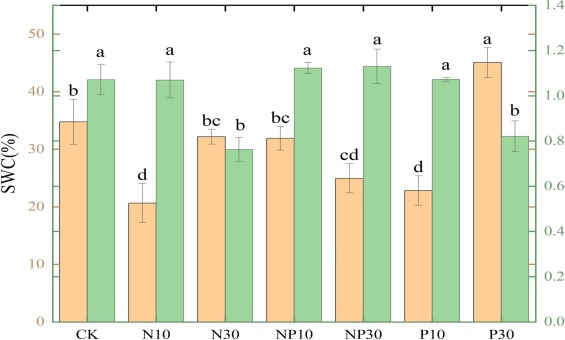
Fig. 2.?The effects of N and P addition on soil water content (SWC) and bulk density (BD). Note: Different lowercase letters indicate significant differences between the different nitrogen and phosphorus addition treatment, respectively, at the P < 0.05 level.
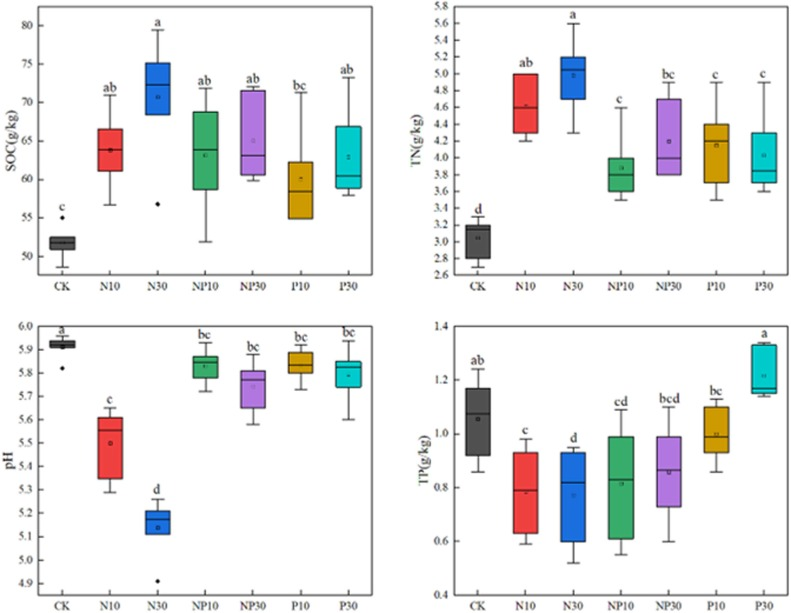
Fig. 3.?The effects of N and P additions on soil total nutrient content in alpine grassland. Note: Box plots represent the smallest observation, lower quartile, median, upper quartile, and largest observation (n = 6). Different lowercase letters indicate significant differences between the different nitrogen and phosphorus addition treatment, respectively, at the P < 0.05 level.
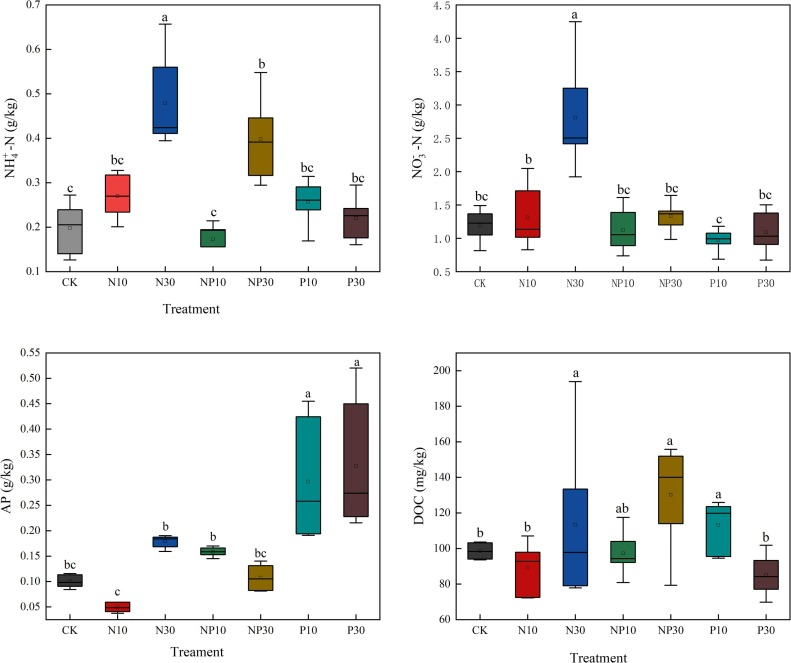
Fig. 4.?The effects of N and P additions on soil available nutrient content in alpine grassland. Note: Box plots represent the smallest observation, lower quartile, median, upper quartile, and largest observation (n = 6). Different lowercase letters indicate significant differences between the different nitrogen and phosphorus addition treatment, respectively, at the P < 0.05 level.
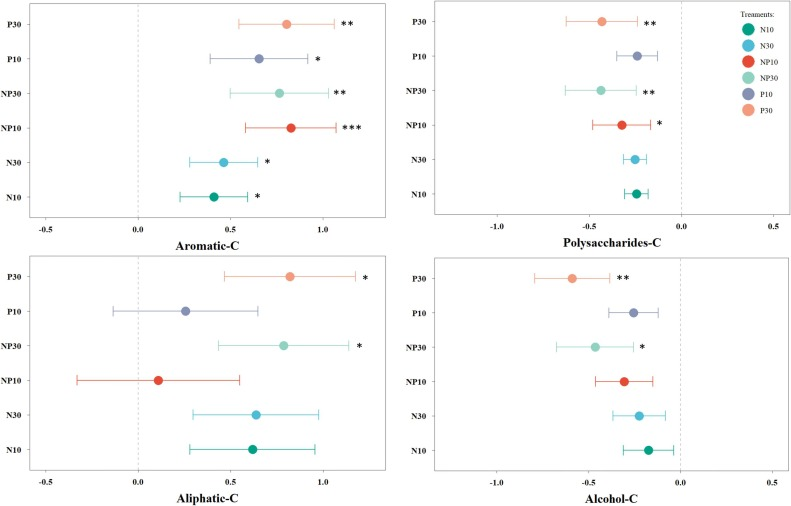
Fig. 5.?Effects of nitrogen and phosphorus addition on the relative abundance of soil chemical structure of alpine grassland on QTP. Note: Values are means with 95?% confidence intervals. The p-values indicate the differences among vegetation types. * indicates P < 0.05, ** indicates P < 0.01, ** indicates P < 0.001.
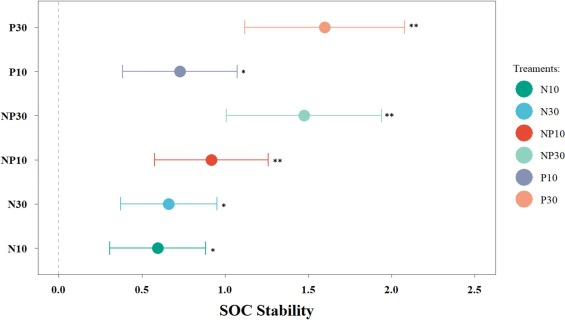
Fig. 6.?The effects on SOC stability of N and P addition. Note: Values are means with 95?% confidence intervals. The p-values indicate the differences among vegetation types. * indicates P < 0.05, ** indicates P < 0.01, ** indicates P < 0.001.
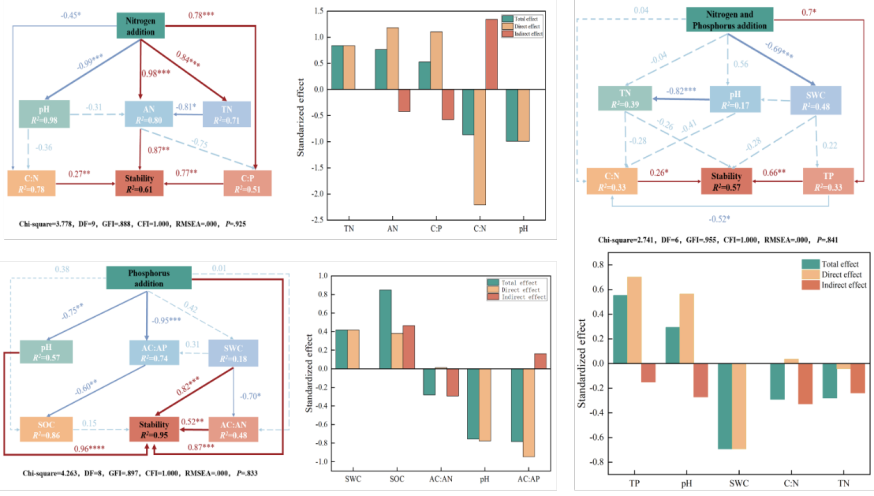
Fig. 7.?The effects of soil properties on soil carbon chemical structure stability as estimated using the structural equation model. Panel (left), the numbers in blocks are the variance explained by the model (R2), and the numbers on arrows are standardized direct path coefficients. Red and blue arrows indicate positive and negative effects, respectively. The total effects of environmental factors on soil carbon chemical structure stability are presented in Panel (right).